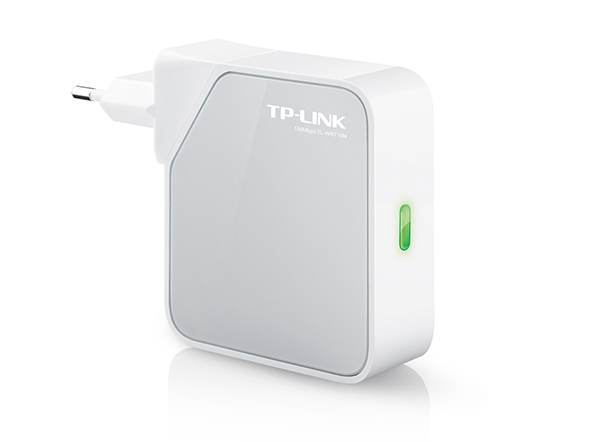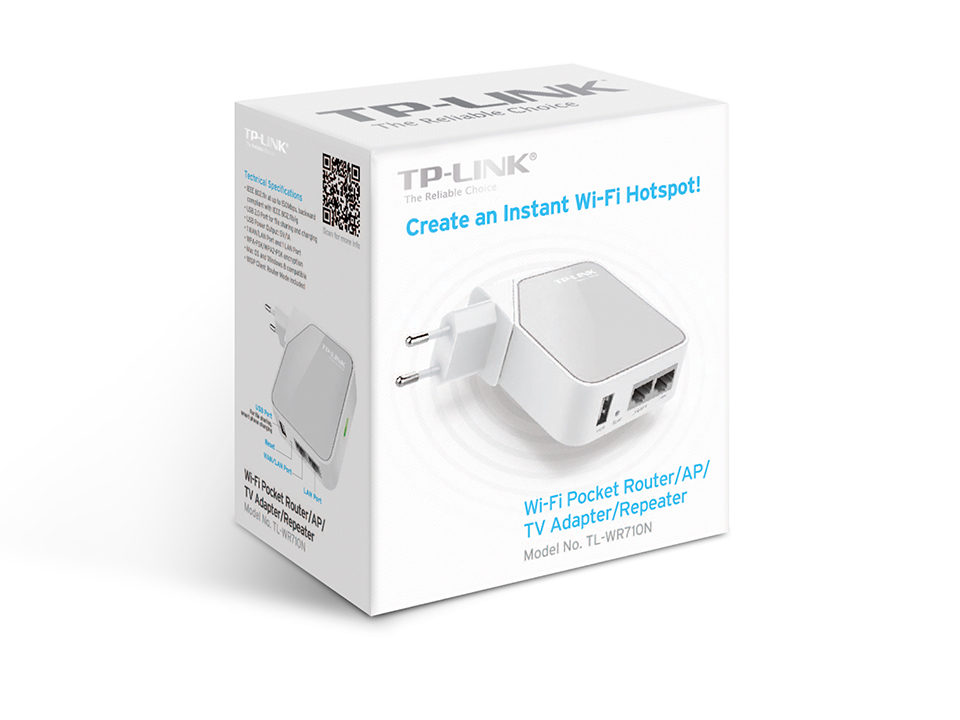TL-WR710N
End of LifeWi-Fi Pocket Router/AP/TV Adapter/Repeater
- Portable design, ideal for travel and home use
- Built-in power adapter, no bulky adapter needed
- Support Wireless Router, Client, Repeater, Access Point, WISP Client Router modes
- Multifunctional USB Port for file sharing and charging
Portable and Compact—Made to Move
TL-WR710N is small enough to put into your pocket and take on the road to share the Internet. Along with its built-in adapter, it is a perfect choice for r travelers, students, or anyone else to work or play.
- USB Port
- LAN/WAN Port
- LAN Port
Multiple Operating Modes for Different Scenarios
Wireless Router Mode (Default)
Create an instant private wireless network and share Internet to multiple Wi-Fi devices, suitable for most hotel and home network.
Client Mode (TV/Game Console)
Give wired-only devices access to an existing Wi-Fi network
Repeater Mode
Extend existing Wi-Fi, improving signal strength and maximizing coverage
Access Point Mode
Create a wireless network for Wi-Fi devices.
WISP Client Router Mode
Access the Internet wirelessly by connecting to an outdoor WISP Access Point.
Multifunctional USB Port for File Sharing and Charging
Allows you to attach a USB storage device to the USB port and share files and media through your Internet browser with different computers over the local Network. Also, the USB port can provide power supply (up to 5V/1A) to mobile devices like smart phones or tablets, so that you can avoid the trouble of carrying several chargers while travelling.† Maximum wireless signal rates are the physical rates derived from IEEE Standard 802.11 specifications. Range, coverage, and the maximum number of connected devices are based on test results under normal usage conditions. Actual wireless data throughput, wireless coverage, and number of connected devices are not guaranteed and will vary as a result of 1) environmental factors, including building materials, physical objects, and obstacles, 2) network conditions, including local interference, volume and density of traffic, product location, network complexity, and network overhead, and 3) client limitations, including rated performance, location, connection quality, and client condition.






